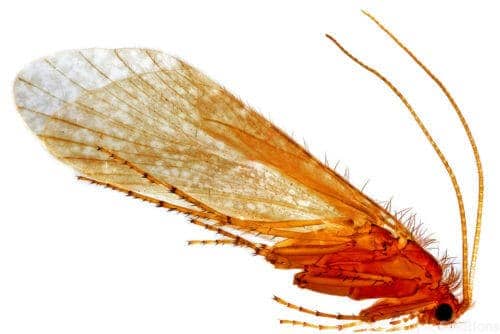Patina Mendez is a caddisfly expert, so it’s no surprise that when KQED Science’s Deep Look wanted to get up close and personal with a caddisfly, they asked Mendez for help.
A lecturer in the Department of Environmental Science, Policy and Management and a fresh water ecologist, Mendez happily told them all about the behavior and diversity of caddisflies — known mostly to anglers, who imitate the moth-like adults with their elaborately tied flies — in streams in Mt. Tamalpais State Park. She arranged with the California Department of Fish and Wildlife and park authorities to collect caddisfly larvae — specifically the species she studies, Neophylax rickeri — and take them back to KQED’s studio in San Francisco for close-ups.
“I was really happy that Deep Look captured just how picky the caddisflies were in building,” Mendez said. “It’s something I’ve described in a few talks, and everyone is always amazed at how something so small can have so many choosy behaviors. Given how specific humans are when building their own houses, I think it helps people to identify with insects a little bit more.”
KQED and NPR posted the video online Aug. 9, showing how caddisfly larvae secrete a water-proof tape they use to build a portable home from sand grains to protect them from torrents that could easily sweep them downstream. Once they reach maturity, they pupate and grow wings, turning into a short-lived but abundant food source for trout and other fish.
“They line themselves up like little sleeping bags,” Mendez told KQED producer Elliott Kennerson.
Mendez teaches a year-long undergraduate senior thesis course in environmental science, and studies the life history of caddisflies and other aquatic organisms. She is currently documenting caddisfly diversity in California and assembling a library of all the scientific studies of caddisflies worldwide.
For more on the life history of N. rickeri in Marin County, check out her paper in theAnnals of the Entomological Society of America.


